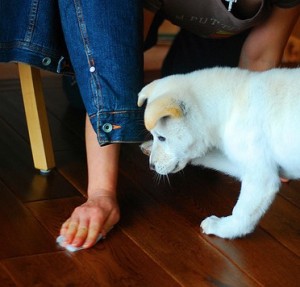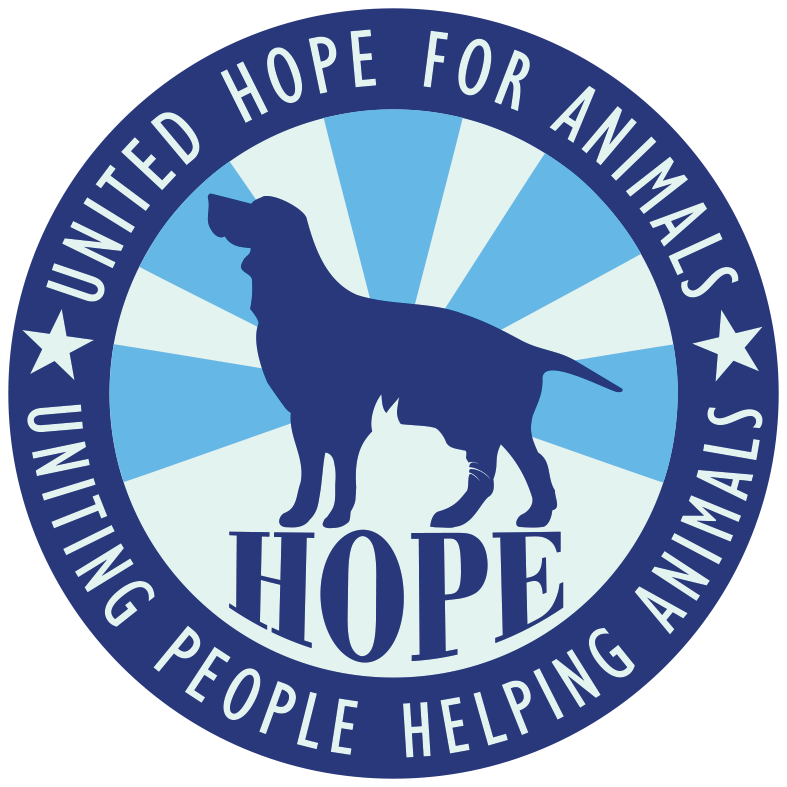Dog caregivers probably view dog housetraining as a necessary evil. True enough, but it’s more often people, rather than puppies, who err. Successful housetraining depends largely on the effort put into it by the human element. Approached the right way – with prevention, not punishment – housetraining can be accomplished in a short time and be a painless procedure for you and your dog.
Puppy Training
Puppies can begin to respond to housetraining when they are eight weeks of age. The younger the pup, the less time between impulse and action. He needs to eliminate; he does. Scold him and he’s probably forgotten all about it by the next time he has to relieve himself. Punishing a young puppy has no more effect than it would on a baby in diapers.
But puppies are innately clean. Watch a litter sleeping in its pen. As soon as each puppy wakes up, he uses the area farthest from the nest to eliminate. Puppies won’t dirty their bed unless forced to do so. This instinct is your greatest housetraining aid.
Confining the Puppy
 Start off, then, by confining the puppy as he has been used to with his mother and litter mates. He knows only this living arrangement, and accepts it in new surroundings if he isn’t first allowed the run of the house. Control is promoted by the puppy’s instinctive aversion to soiling his bed. You must help by anticipating the times he needs to eliminate and taking him to an appropriate place. He learns correct behavior by not having opportunities to make mistakes. There will be accidents – no puppy ever grew up without them – but they’ll be fewer as you remain diligent in your training routine.
Start off, then, by confining the puppy as he has been used to with his mother and litter mates. He knows only this living arrangement, and accepts it in new surroundings if he isn’t first allowed the run of the house. Control is promoted by the puppy’s instinctive aversion to soiling his bed. You must help by anticipating the times he needs to eliminate and taking him to an appropriate place. He learns correct behavior by not having opportunities to make mistakes. There will be accidents – no puppy ever grew up without them – but they’ll be fewer as you remain diligent in your training routine.
Before you bring the puppy home, prepare a pen for him or enclose an area in one room. The kitchen is a good location. It’s usually a center of family activity, where the puppy won’t feel isolated. The floor is as damage-proof as any in the house, in case of accidents, and most kitchens have a back door handy for whisking the pup outside as necessary. Line the bottom of the enclosure with several overlapping layers of newspaper or wee-wee pads. Put food and water dishes and toys inside. Use a small blanket or towels for bedding. (Save the regular dog bed until your puppy is past the chewing stage.)
Housetraining may be accomplished in a few weeks, or less. But the pen still may be needed for the growing dog during the night or when you’re away for several hours. Allow ample space for well-separated sleeping and “bathroom” areas.
Establish a Routine
Try to arrange the puppy’s arrival during a period of good weather so you can go outside frequently. Try to bring the puppy home when you’ll have time to begin settling him into a training routine.
Establishing a routine is simple. The puppy will help you set up his schedule. He needs to “go” when first waking up in the morning, after naps, eating and drinking, playing, or other stimulation, and before being bedded down at night. These activities take up most of his day, but should two or three hours elapse between eliminations, give him a chance to go out.
Keep a sharp eye on the puppy; anticipate his need. Most will go through a ritual sniffing and circling before eliminating – so your warning will often be the pup’s behavior.
Bowel movements depend to a great extent on feedings. A young puppy given several meals a day may have that many movements, far more than he’ll have as an adult dog. Feeding at regular times helps immeasurably in keeping the puppy on schedule.
Going Outdoors
 When the puppy shows signs of needing to eliminate, pick him up immediately and take him outside. Have his leash handy; put it on as you go.
When the puppy shows signs of needing to eliminate, pick him up immediately and take him outside. Have his leash handy; put it on as you go.
During the first stages of housetraining, take the pup to the same place each time – well away from the house or areas of human foot traffic. Once he’s urinated in “his spot,” the scent remains and stimulates him to use the spot again.
Always go outside with the pup, even if you have a fenced yard or acre of ground around your home. Don’t just push him out the door or he’ll form the habit of relieving himself there. Also, you can’t be sure if he has eliminated if you don’t go out too.
The puppy will probably relieve himself soon after he’s taken to the designated spot. Be patient. Walk him around a little, but don’t let him become too distracted. As soon as he appears ready to eliminate softly repeat a simple phrase (such as “do it”). Repeat it several times; once you begin the command, do not stop until he actually begins to eliminate. Then, quietly change from the command word to lavish, but gentle, praise until he finishes. Repeat this going outside-same place-prompt-praise routine until he gets the idea.
After he’s learned that outdoors is the approved location for his duties, take the puppy to different places and on various surfaces, so that he doesn’t become “fixed” on a particular spot and refuse to eliminate anywhere else. Let the puppy know he can relieve outside wherever he’s led.
Accidents Do Happen
 No mater how much care you take, there will be accidents. Scold the puppy only if you catch him in the act. His memory is short. Scolding or punishment after the act confuses him – he won’t know why you’re upset.
No mater how much care you take, there will be accidents. Scold the puppy only if you catch him in the act. His memory is short. Scolding or punishment after the act confuses him – he won’t know why you’re upset.
Putting the puppy outside after an accident serves no good purpose. It’s more likely to undermine the association you’re trying to build between his urges to eliminate and going to the right place to do it.
Under no circumstances should a puppy’s nose be rubbed in his feces. This may merely teach him to eat excrement, since he licks his nose to clean it.
When you catch the pup in the act, raise your voice enough to startle him (use “No!”). Sweep him into your arms, taking him immediately to “his spot” outside. Stay with him. If he finishes eliminating there, praise him. If not, he may already be finished; bring him back in without a word.
What should you do when a puddle or mess is found? Clean it up and promise yourself not to give the pup other chances to get into trouble. Be sure to remove all the scent from the scene of an accident. Otherwise, it remains as temptation for the puppy to use the same place again. Follow the directions on commercial products made especially to remove pet urine / excrement odors/stains.
The puppy is housetrained by prevention. He’s taught good manners while not being given a chance to form bad habits.
The Adult Dog
An adult dog has greater learning capacity than a puppy. He remembers praise or punishment, and more readily understands cause and effect relationships. He also has greater physical control and less frequent need to relieve himself.
If your newly acquired grown dog was properly trained as a puppy, you should have little difficulty adapting his routine to your home.
But, even though your dog may have been perfectly housetrained in his previous home, nervous reaction to a strange situation or scents may cause a lapse in manners or trigger the male dog’s natural instinct to “mark” his territory by urinating. Follow the basic housetraining rule. Confine the dog unless you can be with him and watchful. A dog crate is accident prevention at night or when he must be left for several hours; be sure he has a good chance to relieve himself before being confined.
Exercise your dog frequently. Some dogs get along with morning, late afternoon, and evening walks. Others need to relieve themselves more often.
From the start, take your dog on his leash to where you want him relieve himself. Praise your dog extravagantly as he performs in the right place. Let him know you’re delighted with him for his good behavior. He’ll catch on quickly. As with a puppy, keep him on a regular schedule. Allow him run-of-the-house privileges only when he shows housetraining reliability.
Asking to Go Out
 Once your dog is housetrained, teach him to let you know when he needs to go outside. Make an event of his excursions. Enthusiastically ask the dog if he’d like to take a walk. Put on his leash, pause at the door, and repeat the question (always use the same words). Urge him to bark or “speak” if you want this additional signal.
Once your dog is housetrained, teach him to let you know when he needs to go outside. Make an event of his excursions. Enthusiastically ask the dog if he’d like to take a walk. Put on his leash, pause at the door, and repeat the question (always use the same words). Urge him to bark or “speak” if you want this additional signal.
Dogs quickly absorb often-repeated routines and phrases that apply to them. “Do you want to go out?” soon sends your dog tail-wagging to the door. Before long he’ll take the initiative himself. It may also help to provide him with a way to signal to you that he needs to go out, such as with a dangling bell strap or a more sophisticated electronic bell.
You must follow through, of course, by exercising him when the request is made. Don’t permit anyone to tease him with his “phrase” or it will lose its meaning and confuse the dog.
Patience, understanding, and diligence on your part will soon make for a well-housetrained dog.
Photo Credit: toastiest
